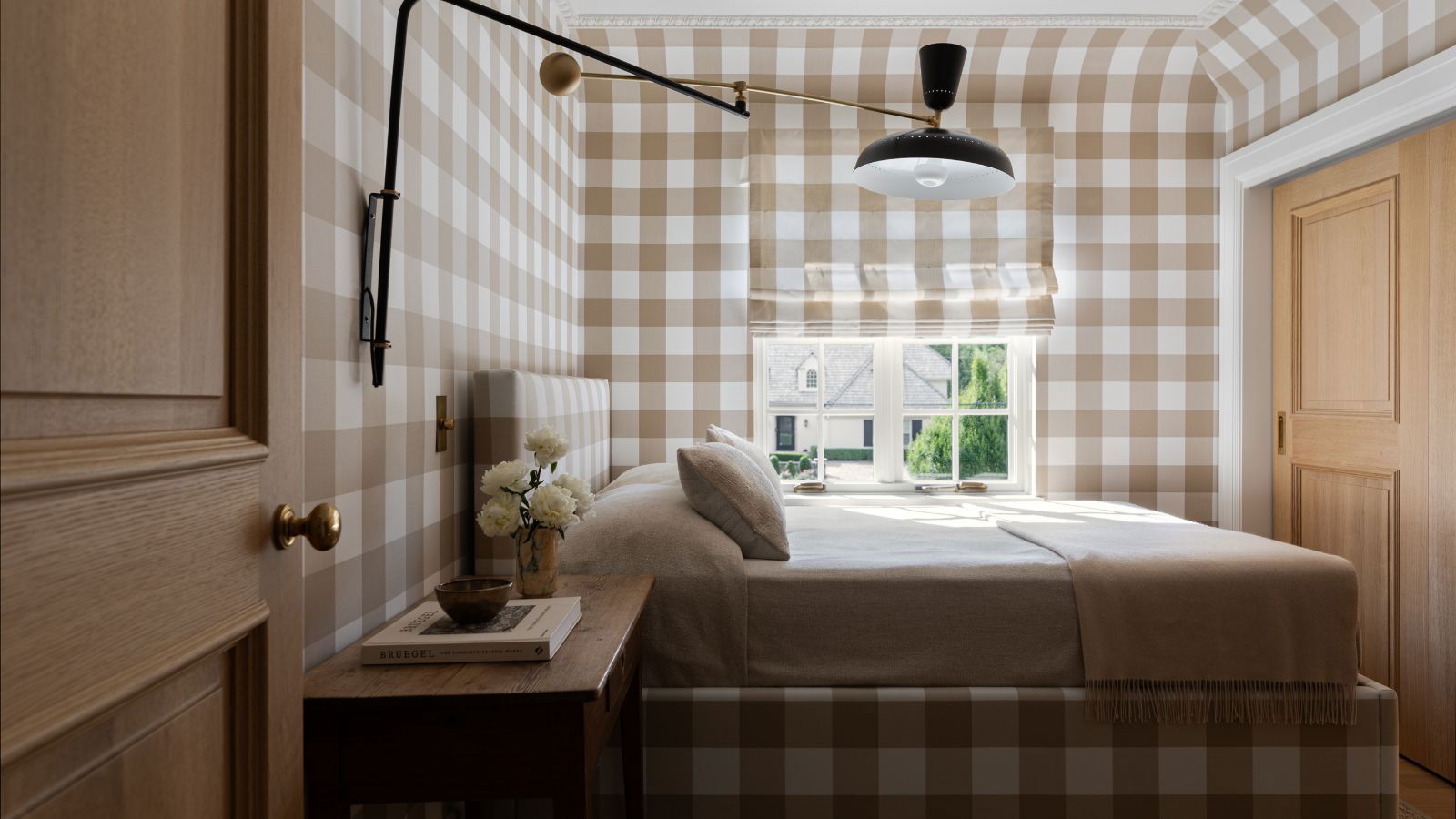The Bedroom Layout That Could Be Sabotaging Your Sleep: Feng Shui Experts Reveal the Truth
A viral social media image has millions questioning their bedroom setup – but what does science say about ancient placement principles?
The Viral Warning That Started a Global Conversation
A striking image has captured the attention of millions across social media platforms: an elderly woman with an expression of grave concern, warning viewers about a specific bed placement that allegedly “attracts poverty and ruin.” While the dramatic presentation might seem like typical internet sensationalism, the underlying message taps into centuries-old principles from Feng Shui, the ancient Chinese practice of harmonizing living spaces to promote prosperity, health, and overall well-being.
The image, which has been shared over 2.3 million times across various platforms, has sparked intense debate between skeptics and believers, with interior designers, sleep specialists, and Feng Shui practitioners weighing in on whether bedroom furniture placement can genuinely impact life outcomes. Beyond the viral nature of the content, the discussion raises important questions about how our physical environment influences our psychological state, sleep quality, and daily energy levels.
Understanding the “Forbidden” Bed Position

According to traditional Feng Shui principles, the most problematic bed placement is what practitioners call the “coffin position” – a setup where the bed is positioned with the footboard directly facing the bedroom door. This arrangement, the viral image warns, creates a direct pathway for negative energy to flow toward the sleeper, potentially resulting in various adverse effects on health, wealth, and relationships.
The terminology itself – “coffin position” – reflects the serious nature of this concern within Feng Shui philosophy. The reference stems from the traditional practice of carrying deceased individuals feet-first out of a room, making the feet-toward-door position symbolically associated with death and the departure of vital life energy, known as “Chi” or “Qi.”
Dr. Sarah Chen, a cultural anthropologist specializing in Eastern philosophy at Stanford University, explains the historical context: “In traditional Chinese culture, the positioning of objects, especially those related to rest and rejuvenation, was believed to directly impact the flow of life energy. The feet-toward-door position was avoided not just in bedrooms, but in the placement of any furniture where people would spend extended periods.”
The Energy Flow Theory Behind the Warning
Feng Shui practitioners believe that the problematic aspects of the coffin position extend beyond symbolic concerns to practical energy dynamics. According to this philosophy, several negative effects can result from sleeping with feet pointing toward the door:
Energy Drainage: The most significant concern is the alleged rapid escape of personal Chi during sleep hours. Practitioners argue that the door creates a “rushing river” of energy that pulls the sleeper’s vital force away from their body, leaving them depleted upon waking.
Financial Instability: Traditional Feng Shui connects energy flow to prosperity, suggesting that when personal Chi is constantly drained during rest, the individual’s ability to attract and maintain wealth becomes compromised. This belief system views energy and financial abundance as interconnected forces.
Health Complications: Proponents argue that disrupted energy patterns can manifest as physical symptoms, including restless sleep, chronic fatigue, frequent illness, and difficulty concentrating during waking hours.
Relationship Challenges: The theory extends to emotional well-being, suggesting that energy depletion affects one’s ability to maintain harmonious relationships and emotional stability.
Master Liu Wei, a certified Feng Shui consultant with over 30 years of experience, notes: “The bedroom is where we spend approximately one-third of our lives in a vulnerable state. The energy patterns established in this space have profound impacts on every other aspect of our daily experience.”
The Recommended Bedroom Layout Solutions
Traditional Feng Shui offers specific guidelines for optimal bed placement that allegedly promote positive energy flow and life outcomes:
The Commanding Position: The ideal placement positions the bed diagonally across from the door, allowing the sleeper to see the entrance without being directly in line with it. This arrangement is believed to provide both security and control over incoming energy.
Solid Wall Support: The headboard should rest against a solid, stable wall, preferably the one farthest from the door. This positioning is thought to provide both physical and energetic support, creating a sense of security and stability that promotes deeper sleep.
Avoiding Window Alignment: Practitioners recommend against placing the bed directly under a window or between a door and window, as these arrangements allegedly create energy “highways” that disrupt rest patterns.
Clear Pathways: The space under and around the bed should remain uncluttered to allow smooth energy circulation. This includes avoiding storage boxes under the bed and ensuring adequate walking space on both sides.
Protective Barriers: When room layout constraints make ideal positioning impossible, Feng Shui suggests using protective elements such as folding screens, tall plants, or decorative room dividers to redirect or block problematic energy flows.
Modern Interior Design Perspectives
Contemporary interior designers and sleep specialists approach bedroom layout from different angles, though many of their recommendations align surprisingly well with traditional Feng Shui principles. The convergence suggests that some ancient wisdom may have practical foundations, even if the underlying explanations differ.
Psychological Comfort: Dr. Michael Rodriguez, a sleep specialist at the Mayo Clinic, explains that bed positioning can significantly impact sleep quality through psychological mechanisms: “When people can see the bedroom door from their bed, they often report feeling more secure and less anxious. This sense of control and awareness can contribute to faster sleep onset and better overall rest quality.”
Traffic Flow Optimization: Professional interior designers consistently recommend bedroom layouts that minimize disruption from hallway traffic, noise, and light infiltration. These practical concerns often result in bed placements that align with traditional Feng Shui recommendations, though for different reasons.
Lighting Management: Modern sleep science emphasizes the importance of controlling light exposure for healthy circadian rhythms. Beds positioned away from direct door and window alignment naturally receive less disruptive light exposure, supporting better sleep patterns.
Air Circulation: Contemporary bedroom design prioritizes proper air circulation for temperature regulation and air quality. The clutter-free, well-positioned layouts recommended by Feng Shui often support these modern health requirements.
Scientific Research on Environment and Sleep
While specific studies on Feng Shui bed placement remain limited, extensive research exists on how bedroom environment affects sleep quality, mood, and cognitive function. Several findings provide indirect support for some traditional placement principles:
Sleep Position Security: A 2019 study published in the Journal of Environmental Psychology found that individuals who could see their bedroom door while lying in bed reported 23% better sleep quality and 15% reduced anxiety levels compared to those in door-facing positions.
Clutter and Sleep Quality: Research from UCLA’s Center for Environmental Health Sciences demonstrates that bedroom clutter significantly impacts cortisol levels and sleep efficiency. The clear, organized spaces recommended by Feng Shui align with these scientific findings.
Color and Energy: Studies on color psychology support some Feng Shui bedroom recommendations, showing that certain color combinations can influence mood, energy levels, and sleep patterns in measurable ways.
Natural Light Exposure: Circadian rhythm research validates the importance of controlling bedroom lighting, supporting traditional recommendations about window and door positioning relative to sleep areas.
The Placebo Effect and Psychological Benefits
Even skeptics acknowledge that Feng Shui bedroom arrangement may provide genuine benefits through psychological mechanisms, particularly the placebo effect and increased environmental awareness.
Dr. Jennifer Walsh, a clinical psychologist specializing in sleep disorders, notes: “When people make intentional changes to their living space based on a belief system they find meaningful, they often experience genuine improvements in mood, energy, and sleep quality. Whether these benefits stem from energy flow or psychological comfort may be less important than the positive outcomes themselves.”
The practice of thoughtfully arranging bedroom furniture, regardless of underlying philosophy, encourages people to create more organized, aesthetically pleasing, and functionally efficient spaces. These improvements can contribute to reduced stress, better sleep hygiene, and enhanced overall well-being through purely practical mechanisms.
Cultural Context and Global Adoption
The viral spread of Feng Shui bedroom advice reflects growing global interest in holistic approaches to health and well-being. As traditional Western approaches to home design increasingly incorporate elements from various cultural traditions, the boundaries between ancient wisdom and modern practice continue to blur.
“We’re seeing unprecedented interest in Feng Shui principles among non-Asian clients,” reports Maria Santos, a certified interior designer in Los Angeles. “People are looking for ways to create homes that support not just physical comfort, but emotional and spiritual well-being. Feng Shui offers a framework for thinking about space in these broader terms.”
The integration of Feng Shui concepts into mainstream interior design reflects broader cultural shifts toward mindfulness, environmental consciousness, and holistic health approaches. Even individuals who don’t embrace the spiritual aspects of Feng Shui often find value in its emphasis on intentional, harmonious living spaces.
Practical Implementation Strategies
For those interested in experimenting with Feng Shui bed placement, implementation can begin with simple adjustments that don’t require major room renovations:
Assessment Phase: Begin by observing your current bedroom layout and noting any alignment issues with doors, windows, or traffic patterns. Document sleep quality, morning energy levels, and overall bedroom comfort for baseline comparison.
Gradual Adjustments: Make incremental changes rather than complete room overhauls. Start with repositioning the bed away from direct door alignment, then add protective elements or organizational improvements as needed.
Professional Consultation: For complex room layouts or significant life challenges, consider consulting with certified Feng Shui practitioners who can provide personalized recommendations based on individual circumstances and goals.
Integration with Modern Needs: Combine traditional principles with contemporary requirements such as electrical outlet access, climate control efficiency, and technology integration to create functional, harmonious spaces.
The Bottom Line on Bedroom Energy
Whether viewed through the lens of ancient Chinese philosophy or modern sleep science, bedroom arrangement significantly impacts daily well-being. The viral image that sparked this global conversation may use dramatic language, but it highlights genuine concerns about creating supportive, restful environments that promote health and happiness.
The “coffin position” warning, while culturally specific, encourages thoughtful consideration of bedroom layout and its effects on sleep quality, psychological comfort, and overall life satisfaction. Even skeptics can benefit from the increased environmental awareness that Feng Shui practice promotes, leading to more intentional, comfortable living spaces.
Ultimately, the value of Feng Shui bed placement may lie not in its ability to manipulate invisible energy forces, but in its encouragement of mindful, purposeful home design that supports both practical needs and psychological well-being. In our increasingly busy, stressful world, any practice that promotes better sleep and greater life satisfaction deserves serious consideration – regardless of its ancient or modern origins.
As Master Liu Wei observes: “Whether you believe in Chi or simply want better sleep, the goal remains the same: creating a bedroom environment that supports your highest well-being. The specific methods matter less than the intention to live harmoniously with your surroundings.”

Ethan Blake is a skilled Creative Content Specialist with a talent for crafting engaging and thought-provoking narratives. With a strong background in storytelling and digital content creation, Ethan brings a unique perspective to his role at TheArchivists, where he curates and produces captivating content for a global audience.
Ethan holds a degree in Communications from Zurich University, where he developed his expertise in storytelling, media strategy, and audience engagement. Known for his ability to blend creativity with analytical precision, he excels at creating content that not only entertains but also connects deeply with readers.
At TheArchivists, Ethan specializes in uncovering compelling stories that reflect a wide range of human experiences. His work is celebrated for its authenticity, creativity, and ability to spark meaningful conversations, earning him recognition among peers and readers alike.
Passionate about the art of storytelling, Ethan enjoys exploring themes of culture, history, and personal growth, aiming to inspire and inform with every piece he creates. Dedicated to making a lasting impact, Ethan continues to push boundaries in the ever-evolving world of digital content.
